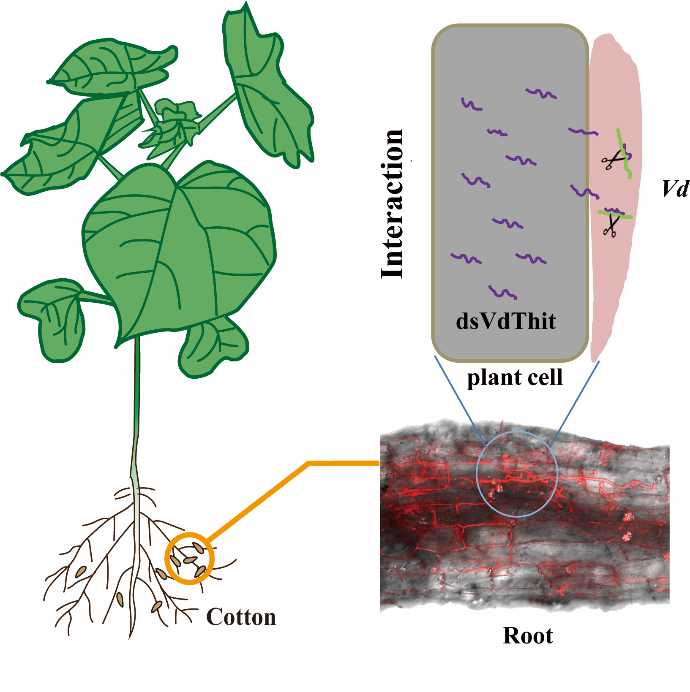Recently, Team of Intelligent Design and Biosynthesis of Agro-microbes of Biotechnology Research Institute (BRI) of Chinese Academy of Agricultural Sciences (CAAS) constructed new cotton germplasm with high resistance against Verticillium wilt. The work, entitled “Host-induced gene silencing of the Verticillium dahliae thiamine transporter protein gene (VdThit) confers resistance to Verticillium wilt in cotton”, was published as a Research Article in Journal of Integrative Agriculture.
Cotton Verticillium wilt is a soil-brone vascular disease caused by V. dahliae, which is called "cotton cancer". Due to the characteristics of wide distribution, heavy harm, long survival time of pathogenic microsclerotium, it is very difficult to control by chemical pesticides, resulting in great economic losses to cotton farmers. At present, there is a lack of varieties with high resistance to Verticillium wilt, and the traditional breeding process is slow. Therefore, it is efficient and accurate to provide new germplasm resources for effective control of cotton Verticillium wilt using biological breeding technology.
The team previously found that the VdThit plays a key role in the pathogenesis and fungal growth. This study used RNA interference (RNAi) technology and the team's mature biological breeding platform to create a new transgenic VdThit-RNAi gene cotton material. Transgenic plants contain a large amount of siRNA, which effectively interferes with the expression of fugal VdThit gene. Through laboratory and field resistance analysis, the root pathogen colonization, disease index and fungal biomass of transgenic cotton were significantly lower than those of wild-type cotton, and disease resistance and yield were distinctly increased. These results provide a new strategy for crop disease resistance breeding.

Professor Hongmei Cheng, and professor Xiaofeng Su are the co-corresponding authors. Ph.D Qi Wang (now working at the Crop Research Institute of Tianjin Academy of Agricultural Sciences), and Ph.D student Guoqiang Pan are the co-first authors of the paper. This research was supported by the National Key R&D Program, the National Natural Science Foundation of China, and the Science and Technology Innovation Program of CAAS, the Nature Foundation of Hebei Province, and the Special Project of the Chinese Academy of Agricultural Sciences. |